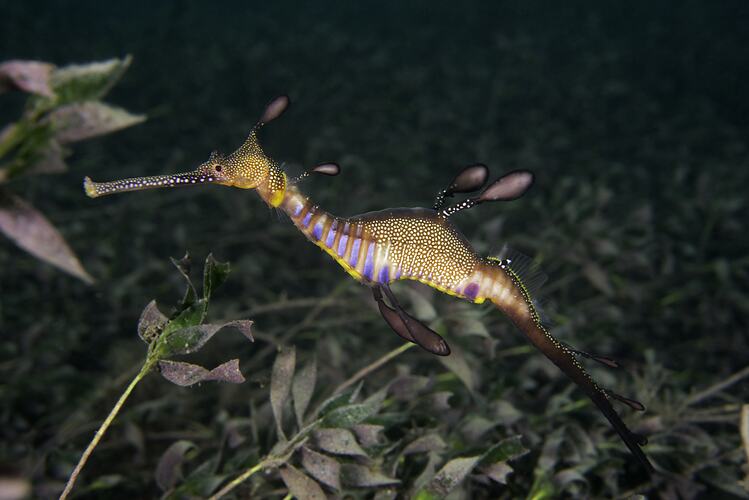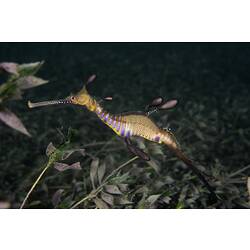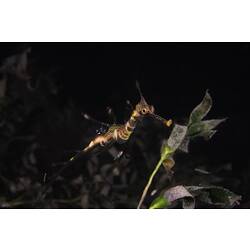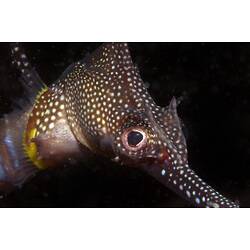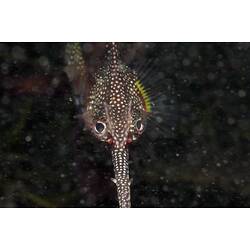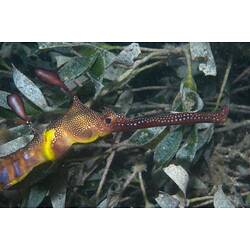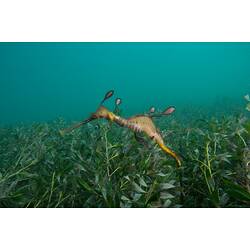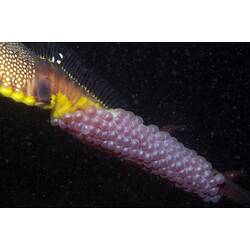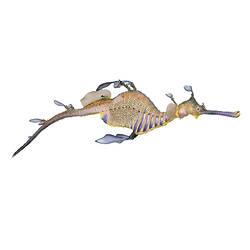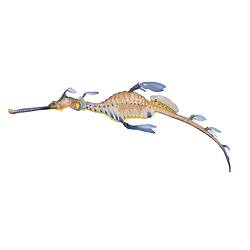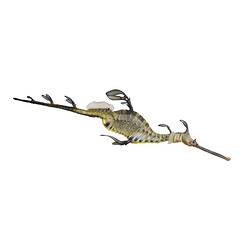General Description
Body elongate, contorted and compressed with a long tubular snout and prominent leaf-like appendages on the body and tail that resemble kelp fronds. Overall reddish-orange with pale spots, iridescent bluish bars on the chest, and a bright yellow underside. Females have deeper bodies than males. Usually 35 cm long head to tail tip (up to 46 cm).
Biology
This seadragon is frequently seen around piers which have seagrass nearby. Although females are deeper-bodied than males, it is the males that brood the developing eggs on the underside of their tail. The Common Seadragon is protected by national legislation, and it is the Marine State Faunal Emblem for Victoria.
Distribution
Southern Australia.
Habitat
On algal beds and rocky reefs, often associated with seagrass Amphibolus.
More Information
-
Animal Type
-
Animal SubType
-
Brief Id
Long snout, hard body, stalked flaps on head.
-
Habitats
-
Diet
Omnivore
-
Diet Categories
Crustaceans, Plankton
-
Endemicity
-
Commercial
No
-
Conservation Statuses
CITES: Not listed, FFG Threatened List: Not listed, Fisheries Act 1995: Protected Aquatic Biota, EPBC Act 1999: Not listed, IUCN Red List: Least Concern
-
Depths
Deep ( > 30 m)
-
Water Column Locations
On or near seafloor
-
Taxon Name
-
Scientific Author
(Lacepède, 1804)
-
Common Name
Common Seadragon
-
Other Names
Weedy Seadragon
-
Kingdom
-
Phylum
-
Subphylum
-
Superclass
-
Class
-
Order
-
Suborder
-
Family
-
Genus
-
Species Name
taeniolatus
